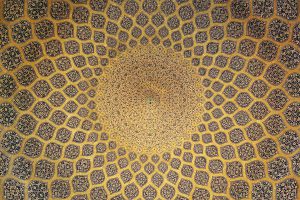Shāfiʿī Fiqh Curriculum via the Two Ṭarīqahs

بسم الله الرحمن الرحيم
According to Sayyid ʿAlawī al-Saqqāf, Mukhtaṣar al-Muzanī is a summarization of Kitāb al-Umm. Mukhtaṣar al-Muzanī is one of the primary works through which the madhhab was spread, developed, and expounded on. Many erudite scholars commentated on this work.
From the kibār of our Aṣḥāb al-Wujūh, there is his eminence, Shaykh Abū Ḥāmid al-Isfarāyīnī, the shaykh of the ʿIrāqī Ṭarīqah. His Taʿlīqah stretched into fifty volumes. It was the central legal text of the ʿIrāqīs and many Khurāsānīs too; this work represented the Ṭarīqah of the ʿIrāqī Shāfiʿīyah. To a student of Shāfiʿī Fiqh, Shaykh Abū Ḥāmid’s Taʿlīqah is a work that needs no introduction; it is a seminal work in the madhhab.
Shaykh Abū Ḥāmid had many students. One of his most senior students is Ibn al-Maḥāmilī. Isnawī mentioned that Ibn al-Maḥāmilī wrote his books from Shaykh Abū Ḥāmid’s Taʿlīqah; specifically, he said Ibn al-Maḥāmilī’s work, al-Lubāb, was taken from it. Lubāb is book that is frequently cited in the both the early and late encyclopedic reference works of Shāfiʿī Fiqh.
Ibn al-ʿIrāqī took Ibn al-Maḥāmilī’s Lubāb and abridged it in a work under the title Tanqīḥ al-Lubāb. Thereafter, Shaykh al-Islām Zakarīyā al-Anṣārī took Ibn al-ʿIrāqī’s abridgement and wrote Taḥrīr Tanqīḥ al-Lubāb. In this work, he removed the instances where differences of opinion are mentioned, he presented only the madhhab’s relied-upon opinions, and he added other fawāʾid. Then, he took his abridgement and penned a commentary on it under the title Tuḥfat al-Ṭullāb.
This is an awesome thing about the Shāfiʿī Madhhab (and likewise the other madhāhib respectively). The books one studies are sourced directly to the salaf, and this is realized as one studies the history of fiqh, its transmission, and its literature. In this case, the overview of this book’s literary development is as follows:
Kitāb al-Umm – Mukhtaṣar al-Muzanī – Taʿlīqah Shaykh Abī Ḥāmid – Lubāb – Tanqīḥ al-Lubāb – Taḥrīr Tanqīḥ al-Lubāb – Tuḥfat al-Ṭullāb.
A similar point can be made with Imām Nawawī’s Minhāj al-Ṭālibīn and its commentaries. The overview of Minhāj‘s development is as follows:
Kitāb al-Umm – Mukhtaṣar al-Muzanī – Nihāyat al-Maṭlab – Basīṭ – Wasīṭ – Wajīz – (according to what Bujayrimī mentioned in his Tajrīd) – Muḥarrar – Minhāj al-Ṭālibīn – Minhāj‘s commentaries.
One point may be observed regarding these two books. The first goes through the ʿIrāqīs and the second through the Khurāsānīs via Imām al-Ḥaramayn’s magnum opus, Nihāyat al-Maṭlab, and Ghazālī’s abridgements of it.
Extolling the virtues of each of these works, Tuḥfat al-Ṭullāb and Minhāj al-Ṭālibīn, would require a more exhaustive writing than what is contained here. This point that I am writing about is specific to the rich history that is behind these works and the legacy that they represent.
With Tuḥfat al-Ṭullāb and Minhāj al-Ṭālibīn placed on the student’s desk, the feeling of awe and inspiration is overcoming. These works represent a legacy that spans more than a thousand years. They represent countless hours of dedicated and exhaustive research. They represent students traversing thousands of miles through difficult lands and compromised conditions to sit at the feet of senior scholars and benefit from their knowledge. They represent lifetimes spent dedicated to sacred learning and knowledge. They represent some of the brightest minds and some of the most intelligent hearts that the world has ever known.
Contained within them is the knowledge of Imām Shāfiʿī and the Aṣḥāb al-Wujūh.
These works convey to us a tradition beginning with Imām Shāfiʿī’s gathering of learning in Cairo where he taught his students the legal tradition that he inherited from those who took it from the Prophet (upon him be peace). They connect us to Imām Shāfiʿī via the two Ṭarīqahs that conveyed his madhhab. They take us to the majlis of Shaykh Abū Ḥāmid al-Isfarāyīnī. They take us to Niẓāmīyah Academy at the time of Imām al-Ḥaramayn al-Juwaynī. They take us to Dār al-Ḥadīth al-Ashrafīyah in the company of the pious and noble saint, Imām Nawawī. They take us to al-Azhar University during the glorious era of Shaykh al-Islām Zakarīyā al-Anṣārī and his students.
And there are so many other gatherings of learning and scholars who contributed to this effort. We sit before these works as humble students indebted to our teachers and our teachers’ teachers. Those who we recall now and those who we do not, may Allah shower them in His mercy and reward them abundantly.


